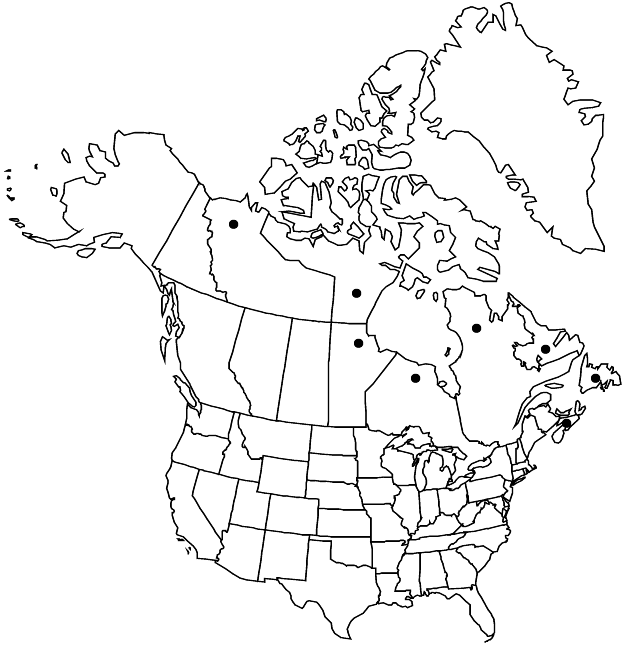Difference between revisions of "Polygonum fowleri subsp. hudsonianum"
Sida 20: 994. 2003.
FNA>Volume Importer |
FNA>Volume Importer |
||
| Line 30: | Line 30: | ||
|elevation=0-30 m | |elevation=0-30 m | ||
|distribution=Man.;Nfld. and Labr.;N.W.T.;N.S.;Nunavut;Ont.;Que. | |distribution=Man.;Nfld. and Labr.;N.W.T.;N.S.;Nunavut;Ont.;Que. | ||
| − | |discussion=<p>Wolf and McNeill described Hudsonian knotweed as a subspecies of Polygonum caurianum (P. humifusum subsp. caurianum in this treatment). In raising it to the rank of species, H. R. Hinds (1995) noted that “separation between P. fowleri and P. hudsonianum, however, is more difficult.” M. Costea and F. J. Tardif (2003) concluded that the taxon is best treated as a subspecies of P. fowleri, based on the existence of intermediate plants.</p> | + | |discussion=<p>Wolf and McNeill described Hudsonian knotweed as a subspecies of <i>Polygonum</i> caurianum (<i>P. humifusum </i>subsp.<i> caurianum</i> in this treatment). In raising it to the rank of species, H. R. Hinds (1995) noted that “separation between <i>P. fowleri</i> and P. hudsonianum, however, is more difficult.” M. Costea and F. J. Tardif (2003) concluded that the taxon is best treated as a subspecies of <i>P. fowleri</i>, based on the existence of intermediate plants.</p> |
|tables= | |tables= | ||
|references= | |references= | ||
| Line 54: | Line 54: | ||
|publication year=2003 | |publication year=2003 | ||
|special status= | |special status= | ||
| − | |source xml=https://jpend@bitbucket.org/aafc-mbb/fna-data-curation.git/src/ | + | |source xml=https://jpend@bitbucket.org/aafc-mbb/fna-data-curation.git/src/8f726806613d60c220dc4493de13607dd3150896/coarse_grained_fna_xml/V5/V5_1132.xml |
|subfamily=Polygonaceae subfam. Polygonoideae | |subfamily=Polygonaceae subfam. Polygonoideae | ||
|genus=Polygonum | |genus=Polygonum | ||
Revision as of 17:36, 18 September 2019
Plants often purplish tinged, homophyllous, rarely subsucculent. Stems prostrate, 5–30 cm. Leaves: ocrea 2.5–5 mm; petiole 2–5 mm; blade purple tinged, narrowly obovate or oblanceolate, 8–30 × 4–12(–15) mm, apex rounded to obtuse; middle stem leaves 1.1–1.8(–2.2) times as long as adjacent branch leaves. Cymes 2–7(–10)-flowered. Pedicels 1–1.5 mm. Perianths (2.2–)2.5–3.3(–3.5) mm. Achenes ovate-lanceolate, (2–)3-gonous, (1.8–)2–2.5(–3.1) mm, faces often unequal, ± flat to concave, roughened, rarely obscurely tubercled.
Phenology: Flowering Jul–Sep.
Habitat: Gravelly seashores
Elevation: 0-30 m
Distribution

Man., Nfld. and Labr., N.W.T., N.S., Nunavut, Ont., Que.
Discussion
Wolf and McNeill described Hudsonian knotweed as a subspecies of Polygonum caurianum (P. humifusum subsp. caurianum in this treatment). In raising it to the rank of species, H. R. Hinds (1995) noted that “separation between P. fowleri and P. hudsonianum, however, is more difficult.” M. Costea and F. J. Tardif (2003) concluded that the taxon is best treated as a subspecies of P. fowleri, based on the existence of intermediate plants.
Selected References
None.